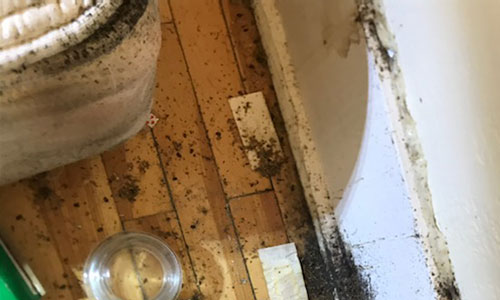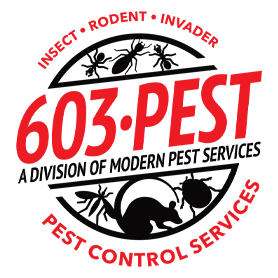Call Today: 603-210-2773
Or Request More Info.
"*" indicates required fields
Bed Bug Removal
Bed Bug Pest Control Overview
When you’re looking to get rid of bed bugs fast, hire a bed bug pest control professional to confirm the infestation and perform the most effective bed bug treatment protocols to all affected areas of your home or business.

As your local bed bug exterminator, 603 Pest Control uses safe sanitizing bed bug treatment methods, and we may even be able to save your mattress, carpet, couch, or other affected furniture.
Bed bugs are year-round pests that are active throughout the day and night. Winter is a prime time for people to notice bed bugs because they spend more time indoors and can be more affected by them.
The best way to get rid of bed bugs is to engage a qualified pest control professional to thoroughly find and remove an entire infestation of bed bugs.
Bed Bug Treatment Solutions
Our thorough and effective 603 Pest Control Bed Bug Service typically requires three steps:
- Step 1: Customers complete a Bed Bug Service Checklist in preparation for treatment. This is a list of how to prepare for a our professional bed bug treatment.
- Step 2: For areas of infestation, the initial bed bug treatment is an application of an EPA-registered liquid product specifically labeled for professional removal of bed bugs.
- Step 3: Subsequent to Step 2, a follow-up treatment is administered, to ensure bed bugs have been removed.
How to Identify Bed Bug Activity Around Your Home or Property
Bed bugs are approximately the size of an apple seed; or one fifth to one quarter of an inch long. They are reddish brown or mahogany colored, especially once engorged with the blood of their host person or pet.
If you touch them when engorged with blood, they will explode and die, so they are nearly impossible to trap for identification purposes. Bed bug eggs are white or off-white, elongated and very small.
Bed bugs live in the crevices and folds of mattresses and box springs, as well as furniture, nightstands, couches, carpets, draperies, walls, wall sockets and more. They can live for 3-6 months without a blood meal.
Anything with fabric or fibers, or touches bed bug infested fabrics, can be a breeding ground for bed bugs.
It is very difficult to see or catch a bed bug, and bed bug bites are difficult to identify. Bed bugs use their piercing mouthpart to bite the skin of their sleeping host, and they inject a secretion that numbs the skin.
A person can experience an allergic reaction when they wake up, or up to 5 days after being bitten. Some people experience itchy welts, and scratching them can make them itch even more.
Key signs that confirm bed bug activity include:
- Blood smears or dark red stains from bed bugs excreting (defecating) blood on a mattress, especially around seams and box springs
- Spots of dried blood on bed sheets
- A musty or sweet smell indicates a large infestation of bed bugs
- Allergic reactions after coming in contact with bed bugs
Disease and Property Damage that Bed Bugs Can Cause
Bed bugs are not known to transmit any diseases. They can, however, cause a range of allergic reactions.
Left untreated, bed bugs can cause damage or loss of property. For example, when a piece of furniture or mattress or couch is too infested with bed bug eggs, it must be disposed of. Anything with fabric or fibers – from drapes to carpeting to couches to stuffed animals – can be a breeding ground for bed bugs.
Bed Bug Biology
Bed bugs are horrible houseguests, travel easily from one location to another, and can live almost anywhere, not just the bedroom. They can inhabit movie theaters, hotels, and subway cars, and gain entry by hitchhiking on furniture from stores or yard sales, on your suitcase when traveling. They can detect a human host from up to five feet away via special sensors that detect human temperature and breath.

